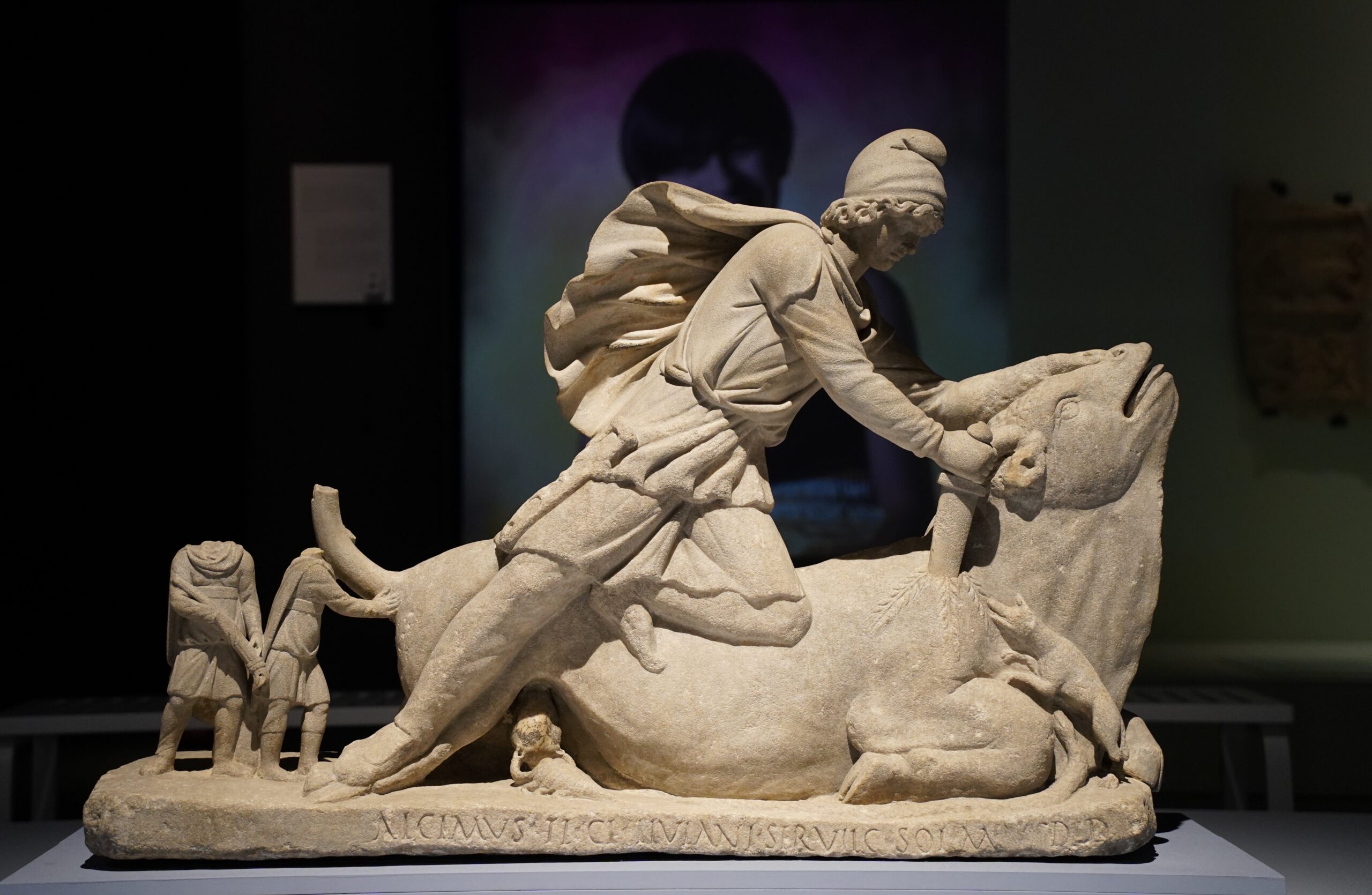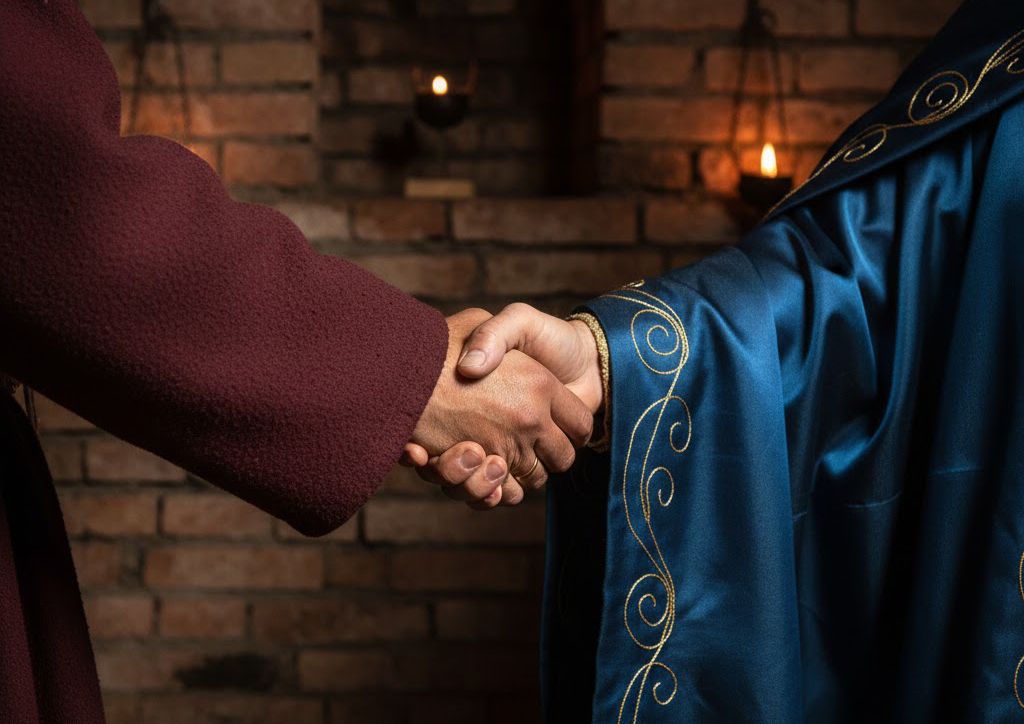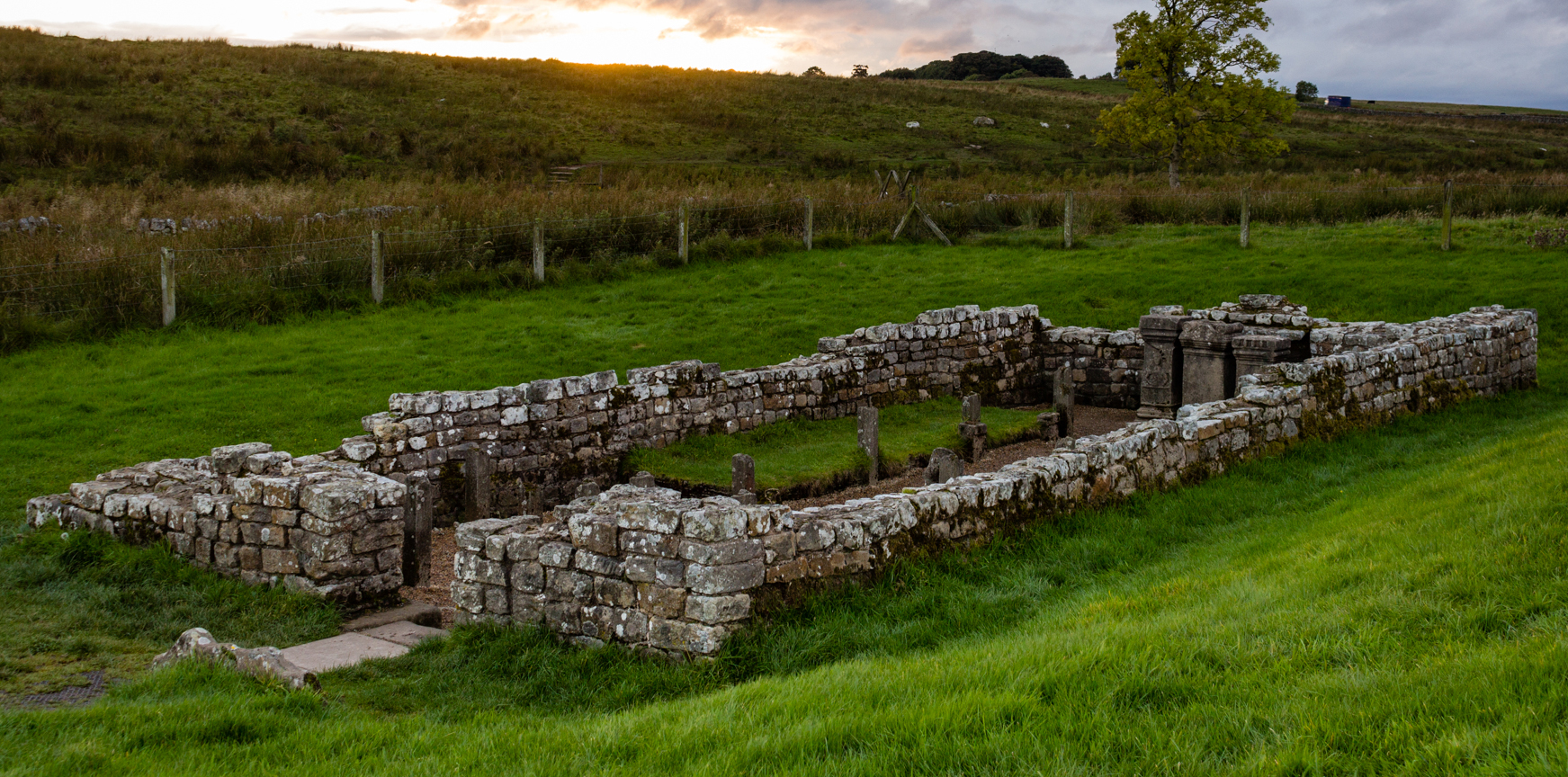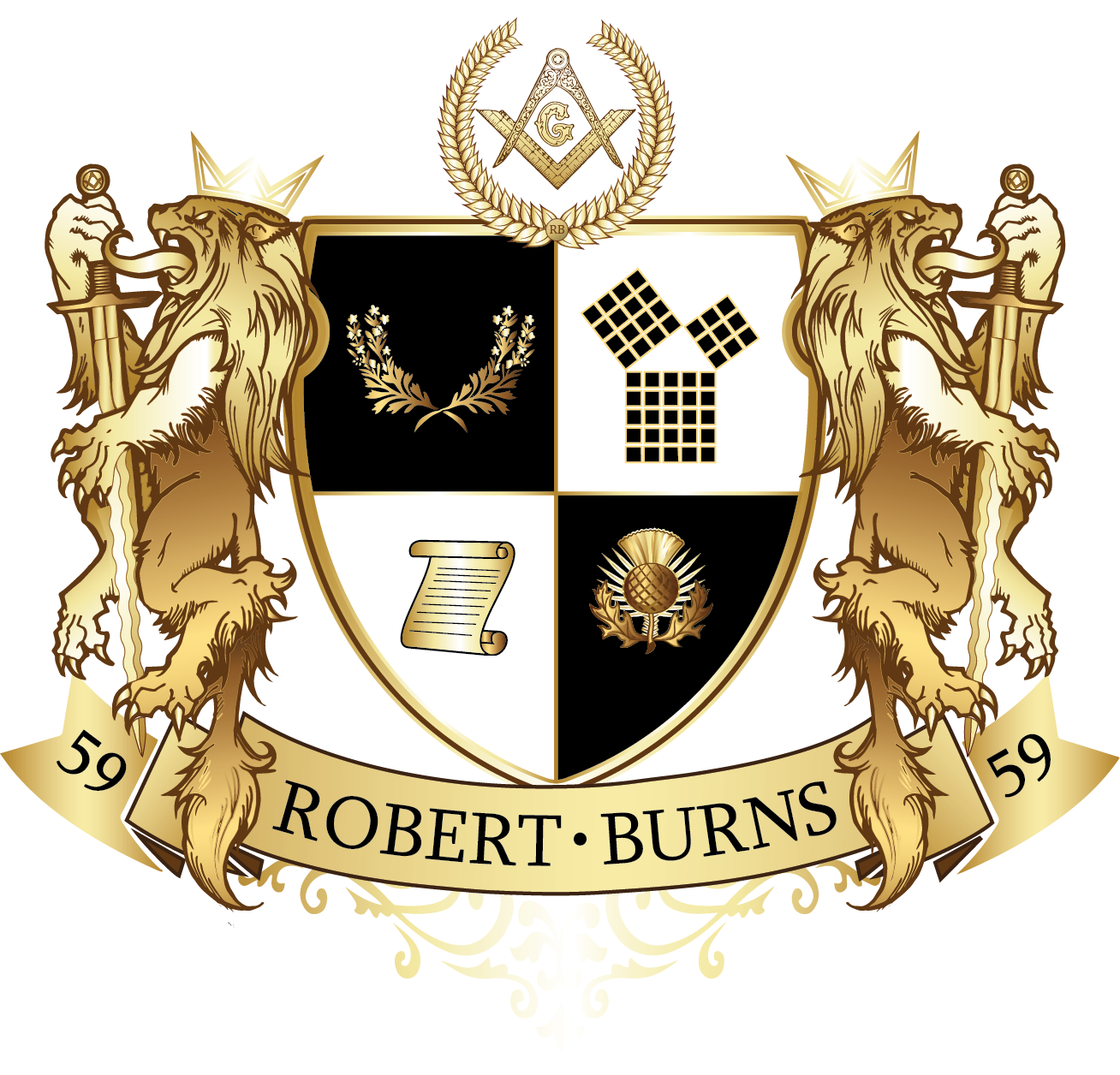Roman Mithraism and Free-Masonry
The Roman Empire was a crucible of religious innovation, a spiritual landscape where traditional state cults waned and new, intensely personal "mystery religions" flourished. Among the most successful and enigmatic of these was Mithraism, a secret, initiatory cult that spread across the empire, finding its most fervent devotees among the soldiers, merchants, and administrators who managed the Roman world.
The Great Debate, Is Mithraism A Roman Invention or Persian Legacy?
For over a century, the study of Mithraism was dominated by the "diffusion model" of the influential Belgian scholar Franz Cumont. Cumont posited that Roman Mithraism was, in essence, the "Roman form of the ancient Indo-Persian deity Mitra", a cult imported directly from Iran. This theory, however, has been largely abandoned by modern scholarship.
A 1971 international conference on Mithraic studies marked a definitive paradigm shift. Scholars now overwhelmingly argue that Roman Mithraism is a new religion, a Western "invention" that is fundamentally distinct from its Persian namesake. As scholar Manfred Clauss states, "no direct continuity... can be demonstrated between the Perso-Hellenistic worship of Mitra and the Roman mysteries of Mithras".
The primary evidence for this break is the cult's central icon, the tauroctony, or bull-slaying scene. This complex image is ubiquitous in Roman mithraea, yet as historian David Ulansey notes, "there is no evidence that the Iranian god Mithra ever had anything to do with killing a bull". This "central cult 'fact'" appears to be a novel creation of the Roman cult's unknown founders.
Therefore, Roman Mithraism is best understood as a sophisticated, synthetic religion. It was "originally and substantially a Greek religion" in its philosophical underpinnings, likely drawing heavily on Platonic and astrological concepts to create a "Utopian soteriology" (a doctrine of salvation) based on a "cosmic soul journey". This new, complex theology was then clothed in "Iranian trappings"—most notably the name of the god Mithras—to grant it an aura of ancient and exotic authority. This "invention" was a bespoke spiritual product, perfectly tailored to a Roman world experiencing a "crumbling" of traditional patriotism and a deep-seated turn toward "mysticism, philosophy and exotic religions".

The Cult of the Soldier and the State
Mithraism appears "suddenly" in the archaeological record in the late 1st century AD. The earliest known Mithraic monument is an inscription from Rome, dated to circa 98-99 AD, dedicated by one Alcimus, a steward of T. Claudius Livianus. The earliest military dedication comes shortly after, from a centurion at Carnuntum on the Danube frontier, dated to before 114 AD.
The cult flourished during the 2nd and 3rd centuries, largely because it promoted virtues essential to the Roman state. It was a religion of loyalty, and Mithras was "honoured as the patron of loyalty to the emperor". This earned it imperial favor from emperors such as Commodus, Septimius Severus, and most notably Diocletian, who, in 307 AD, dedicated an altar to Mithras as the "patron of their empire".
Geographically, the cult was centered in Rome (where an estimated 680 mithraea existed) and the port of Ostia. It was overwhelmingly popular in the western half of the empire, and its sanctuaries are heavily concentrated "along the military frontier, in Britain, and on the Rhine, the Danube".
Regarding its membership, the cult was an "exclusively male membership", a "macho religion for men only". Despite some modern scholarly questions about whether this exclusivity was an absolute ban, the complete absence of any female-authored dedications or inscriptions is telling. While it is famously known as a "soldiers' religion", this label, though accurate, is "probably exaggerated". Its initiates also included merchants, who worshipped Mithras as a god of "Contract and Truth", as well as a significant number of imperial freedmen, slaves, and bureaucrats.
This demographic profile is not coincidental. Soldiers, merchants, and imperial administrators were all "dislocated people" who were "part of massive, empire spanning organizations". For these men, Mithraism provided a "common bond" and a "home". Its hierarchical structure, "imitating the system of promotion in the army", and its core values of loyalty and contractual trust created a powerful, cross-class, pan-imperial fraternal network. It was, in effect, a social technology that reinforced the very virtues that made the Roman military and administrative machine function.
The Mithraeum and Core Theology
A fundamental challenge in studying Mithraism is that "No written narratives or theology from the religion survive". All information is derived from archaeology—about 420 sites, 1000 inscriptions, and 700 examples of the tauroctony—and "brief or passing references" in external Greek and Latin literature.
The cult's temples, or mithraea (singular: mithraeum), were always "underground temples", either natural caverns or, more commonly, specially constructed buildings "imitating a cave". These were small, intimate, and secret spaces.
The tauroctony was the "central niche" image. This scene depicts Mithras slaying a bull, while a dog, snake, and scorpion attack the bull. The scene is typically flanked by two torchbearers: Cautes, with his torch pointing up, and Cautopates, with his torch pointing down. Above, in the corners, are the divine personifications of Sol (the Sun) and Luna (the Moon).
Subsidiary scenes often frame this central image, creating a visual "narrative" of the god's life: his birth "from a rock", his pact with Sol (marked by a "handshake"), their "banquet" of bull-parts, and his final "ascending to the heavens in a chariot".
This lack of written scripture is key. One scholar notes the critical distinction: "For the Mithraists... art... for the Christians... 'text'". The theology was the image. This non-textual, visual basis necessitated a mystery cult structure. The doctrine could not be learned by reading; it had to be explained and experienced ritually, in sequence. The mithraeum itself was a "microcosmic representation of the universe", and the tauroctony is widely interpreted as a complex astrological diagram. The initiation system, therefore, was the curriculum for learning this unwritten cosmic doctrine, guiding the initiate's soul on its journey.
The Decline of the 'Rival' Cult
Mithraism, once a "rival of early Christianity", declined rapidly in the 4th century AD. By the end of that century, it was actively "suppressed and eliminated".
The primary cause for this collapse was the "rise of Christianity" and its acceptance by Emperor Constantine. Mithraists, who had long been patrons of the traditional imperial order, "faced persecution from Christians". The archaeological record bears violent witness to this: the mithraeum at Santa Prisca in Rome was "violently destroyed around 400 AD, probably by Christians", and the mithraeum at Carrawburgh on Hadrian's Wall was similarly "desecrated, probably by Christians".
More nuanced academic analysis, such as that of David Walsh, suggests the cult also "shrivels from within". It "fissured" into "diverse 'cults of Mithras'" and, based on archaeological evidence, "was unable to draw continued commitment" from its worshippers. The cult's downfall was thus a combination of factors. First, internal decay made it vulnerable. Second, its greatest strength—its "religion of loyalty toward the king"—became its fatal weakness when the emperor adopted Christianity. Third, its exclusivity (being all-male) gave it a smaller demographic pool from which to resist the universalist and "absolute" Christian faith. Active Christian suppression was merely the final blow.
The Mithraic Initiation with its Rites, Recognition, and Secrecy
The "Mithraic mysteries" were, by definition, a secret. Adherents formed a "secret fraternal order" whose doctrines were revealed only through a "complex system of seven grades of initiation". This was a "ladder" that the initiate was "called upon to climb".
The Mithraic Degrees
Archaeological and textual evidence allows for a detailed reconstruction of these seven grades. Each grade had a specific name, a tutelary planet (which the initiate's soul was thought to traverse), and a set of symbols.
Table 1: The Seven Grades of Mithraic Initiation
| Grade | Name (Latin/Greek) | English Translation | Tutelary Planet | Key Symbols |
|---|---|---|---|---|
| 1 | Corax | Raven | Mercury | Raven, Beaker, Caduceus (staff of Mercury) |
| 2 | Nymphus | Bridegroom / Occult | Venus | Lamp, Diadem, Veil |
| 3 | Miles | Soldier | Mars | Pouch, Helmet, Lance |
| 4 | Leo | Lion | Jupiter | Batillum (Fire-shovel), Sistrum (rattle), Thunderbolt |
| 5 | Perses | Persian | Luna (Moon) | Akinakes (dagger), Sickle, Moon & Star |
| 6 | Heliodromus | Sun-Runner | Sol (Sun) | Torch, Radiate Crown, Whip |
| 7 | Pater | Father | Saturn | Patera (bowl), Staff, Phrygian Cap, Ring |
This progression was not arbitrary. The sequence of planets represents the "cosmic soul journey" that formed the cult's core soteriology. The initiate was ritually ascending through the seven planetary spheres, in a specific astrological order, to achieve salvation. The seven degrees were the unwritten curriculum of the mystery.
Syndexioi (fellows of the grip), Secret Signs and "Motor Recognition"
Mithraic initiates called themselves syndexioi. This Greek term is translated as "those 'united by the handshake'" or, more evocatively, "fellows of the grip".
This "motor recognition," as requested in the query, was a central component of the cult. The handshake was not merely a greeting; it was a key ritual act. Admission into the community was "completed with a handshake with the Pater" (the "Father," or head of the mithraeum). This physical act was a mirror of the cult's own mythology, which was frequently depicted on reliefs showing Mithras and Sol Invictus (the Unconquered Sun god) shaking hands to seal their pact.
Such secret signs were common in ancient mysteries. The writer Apuleius, speaking of the Mysteries of Isis, wrote, "if he will give me the sign, he shall then be at liberty to hear". For the Mithraists, the handshake was also a practical tool. It was a "token of friendship and as a gesture to show that you were unarmed". Given that the cult's members were "dislocated people" (soldiers and merchants), this secret, physical sign was a brilliant and necessary mechanism. A soldier initiated at Hadrian's Wall could theoretically travel to Rome, present the grip to a Pater, and gain immediate access to a "home" and a network of "brothers". The handshake was a portable, pan-imperial passport to a social and spiritual support system.

The Rites of Initiation and Trials of the Miles and Leo
Fragmentary evidence allows for the reconstruction of specific initiation rituals.
- The Miles (Soldier): Upon reaching the third grade, the neophyte underwent a well-attested ceremony. He was "offered a crown". He was required to reject it, "casting it upon the ground" or "which he caused to fall on his shoulder". As he did so, he declared the ritual phrase: "Only Mithras is my crown". This act of "casting down" was itself a known "sign of recognition". He would then "renounce the social custom of wearing a wreath" and, according to the Christian writer Tertullian, was branded on the forehead with a "cross, symbol of the sun".
- The Leo (Lion): The fourth grade was a crucial transition, marking the initiate as a "full member of the order". For this rite, the initiate's "tongue and hands were purified with honey". This grade was associated with the element of fire, as opposed to the water of earlier grades.
Recovered Texts, The "Catechisms" of Mithraism
While no full scriptures survive, two key textual finds provide an extraordinary glimpse into the cult's secret doctrine and instructional methods.
- The Santa Prisca Mithraeum (Rome): This site is invaluable, as its 3rd-century AD frescoes depict a procession of the seven grades and, uniquely, contain "striking wall paintings, with text". These painted inscriptions include ritual phrases. One of the most famous verses reads: et nos servasti... sanguine fuso. This translates to: "you have saved us after the shedding of the eternal blood". This single line provides the theological justification for the tauroctony: the bull's "eternal blood" is the agent of salvation.
- The "Mithraic Catechism from Egypt" (P.Berol. 21196): This 4th-century Greek papyrus fragment is the very "catechism" mentioned in the query. It is a literal "catechism," structured in a "question and answer form", which details the initiation for the Leo (Lion) grade. Its format, as one source notes, is "strikingly similar... to those of the Masonic Degrees".
These two finds, taken together, unlock the cult's methodology. The Santa Prisca inscription confirms what was taught (salvation via the bull's "eternal blood"). The Egyptian Catechism shows how it was taught: not through open scripture, but through a secret, memorized, question-and-answer liturgy designed to formally reveal the cult's "secrets" to the ascending initiate.
Mithraism and the Origins of Free-Masonry
The "Mithras-Masonry" Connection Debate
We will now delve in the speculative theory that Free-Masonry is a "transmogrified Mithraism". This theory has held a "peculiar attraction for Masonic writers" for a long time.
This debate is best understood through two opposing approaches to history:
- The "Authentic or Scientific" School: This approach, favored by modern academic historians, "is built upon or developed out of verifiable facts and documentation".
- The "Romantic" or "Esoteric" School: This approach "attempts to place Free-Masonry in the context of the Mystery tradition by a correlation of the teachings, allegory, and symbolism".
The "authentic" school's primary critique of any direct link is the "1200-year gap" or "1700 years". Mithraism "flickered out entirely in the fifth century", while "speculative craft Free-Masonry" only has "firm documentation from... the 16th century". From this perspective, proponents are "conveniently jumping over" documented history. Authenticists argue that Free-Masonry demonstrably evolved from medieval Christian stonemason guilds and that any parallels are "of a superficial character" or were inherited indirectly through Christian doctrine.
Proponents of the "romantic" school, however, argue that the similarities are "startling" and too numerous to be mere coincidence.
The Case for Connection with a Large Catalogue of Parallels
The "romantic" case rests on a specific cluster of shared traits, which proponents argue is too unique to have arisen independently. Any single parallel is superficial; the strength of the argument lies in their combination.
- Organizational Parallels: Both are all-male fraternities. Both had a "democratic" membership, admitting initiates "regardless of their origin, condition or status," from "emperors and slaves alike", paralleling the Masonic concept of meeting "on the level." Initiates in both groups called each other "brother" and were bound to practice "Charity and Relief".
- Spatial Parallels: Both groups meet in a secret, enclosed temple (mithraeum / lodge) which was very rare in that time for a religion. Proponents argue both spaces are an "earthly representation of the cosmos" or a "microcosmic representation of the universe". The mithraeum often had a vaulted ceiling painted with stars and benches along the "side lines" for members, similar to a Masonic lodge.
- Ritual Parallels: Both are built on a "complex system of... grades of initiation". Both require initiates to take "an oath of secrecy and dedication". Both use a secret "Motor Recognition" specifically a handshake (syndexioi, "fellows of the grip"). Both included ritual communion meals.
- Theological Parallels: Mithraism featured a "dramatic representation of a dying and a rising", which proponents link to the "Hiramic Tragedy" (the death and "raising" of Hiram Abiff) in the Master Mason degree. The discovery of the Mithraic Q&A "catechism" provides a stark parallel to Masonry's own catechetical method of instruction.
- Degree Parallels: Proponents specifically compare the Leo (Lion) grade to the Master Mason degree, as it was at this grade (the 4th) that one "became a full member of the order".
It is this specific cluster of traits that proponents argue must have been transmitted via a "safeguarded" lineage.
The "Hadrian's Wall" Hypothesis
The "Hadrian's Wall" hypothesis is a specific "romantic" theory that attempts to solve the "1200-year gap" by positing a direct, unbroken, and geographically-specific line of transmission.
Roman Legions in Britannia (The Facts)
The theory is anchored in established historical fact. Mithraism was, as established, a "soldiers' religion" and was imported directly into Roman Britain by the legions. Archaeologists have discovered the remains of "ten temples dedicated to Mithras" in Britain, with a heavy concentration on the northern frontier.
Two key sites on Hadrian's Wall confirm this:
- Carrawburgh (Brocolitia): A "fascinating temple... built by soldiers of the garrison". It was constructed c. 200 AD, destroyed and rebuilt c. 300 AD, and finally "desecrated, probably by Christians" around 330 AD. Excavations revealed three altars dedicated by the garrison's commanders.
- Rudchester (Vindobala): A mithraeum discovered in 1844, which contained five altars. The inscriptions on these altars confirm their origin with the "guard guarding the walls," including dedications from "Lucius Sentius Castus, centurion of the 6th legion" and "Publius Aelius Titullus, prefect".
These facts confirm the user's premise: the Roman soldiers who built and guarded Hadrian's Wall were, undeniably, worshippers of Mithras.

The "Transmogrification" Theory
From this factual anchor, the "Hadrian's Wall" theory takes a speculative leap to bridge the historical gap.
The proposed chain of transmission is as follows:
- Cultural Contact: The local inhabitants of Caledonia (the Picti, or early Scots) "copied the Romans in just about everything". A research paper notes:
“One must understand that the Picti (the inhabitants of Caledonia, before it became Scotland), copied the Romans in just about everything: from kilts (taken from the Roman basic tunic), to bagpipes (what the Romans marched to), even to the sporran, which is based on the chain-mail to protect a legionary's groin, now transformed into a purse!”
- Initiation: Over centuries of contact, it is "reasonable to assume" that many Picti were initiated into the "democratic" cult and became part of the "Army of Mithra".
- The Transmission: This is the critical leap. The theory posits that the Roman legionaries were both soldiers and "skilled Roman legionary masons" (i.e., "wall builders") since their built and guarded the wall. They allegedly passed their Mithraic fraternal secrets to their local "operative mason" apprentices.
- The "Safeguarding": This secret, "transmogrified" Mithraic tradition was then supposedly "safeguarded" within the operative stonemason guilds of Scotland for over a millennium, hidden from the dominant Christian Church.
- The "Revival": Finally, in the 16th and 17th centuries, "speculative" Masons (the "first Scottish Hermeticist lodges") joined these operative guilds and "rediscovered" this hidden, ancient, Mithraic core.
This theory is a proposed solution to the "1200-year gap". It argues for an unbroken, geographically-specific lineage—from a Roman collegium on Hadrian's Wall to a modern Scottish Masonic lodge.
Critical Assessment of the "Scottish Legacy"
When assessed by the "authentic" school, this theory collapses. There is zero documentary or archaeological evidence for this transmission. It is an unsubstantiated "romantic" origin myth.
The documented history of Free-Masonry shows it evolving from medieval operative guilds that were Christian institutions. The "traditional history" of these guilds, recorded in their earliest manuscripts, links them to the building of King Solomon's Temple, not a Mithraic cave.
The "Hadrian's Wall" theory is an anachronism; it projects the esoteric interests of 17th-century "Hermeticist" gentlemen back onto Roman soldiers and medieval Scottish masons.
The Seven Degrees, is it a Parallel or a Coincidence?
The final, specific claim in this theory is that the "seven degrees in the cult of mitra might have been the seven degrees that are claimed by the operative Masons." This provides a testable historical claim.
The "Seven Degrees" of Operative Free-Masonry (The Claim)
The claim of "seven degrees" for operative Masons is not a description of historical medieval guilds. Medieval lodges "did not employ degrees at all in our modern sense". They recognized grades of labor, primarily two: Apprentice (a 7-year term) and Fellow or Master. This was a labor structure, not a 7-step initiatory system. The "seven degrees" claim refers to a modern organization called "The Worshipful Society of Free-Masons," also known as "The Operatives". This society, which does work a 7-degree system, was "reconstituted" in London on May 21, 1913. While it claims ancient origins from a "Grand Assemblage of 926 in York", its verifiable, modern existence is 20th-century.
Comparing the Two "Seven Degree" Systems
The parallel that proponents cite is the existence of a seven-degree system. A direct comparison reveals the structural similarity.
Mithraism and Modern "Operative" Free-Masonry
| Grade | Mithraic Grades (Ancient) | "The Operatives" Grades (Modern, 1913) |
|---|---|---|
| 1 | Corax (Raven) | Iº Indentured Apprentice |
| 2 | Nymphus (Bridegroom) | IIº Fellow of the Craft |
| 3 | Miles (Soldier) | IIIº Fitter and Marker |
| 4 | Leo (Lion) | IVº Setter Erector |
| 5 | Perses (Persian) | Vº Intendent, Overseer, Super Intendent and Warden |
| 6 | Heliodromus (Sun-Runner) | VIº Passed Master |
| 7 | Pater (Father) | VIIº Master Mason and Grand Master Honoris Causa |
Historical Analysis of the "Operative" Claim
The 7 Mithraic degrees were passed to medieval operative Masons, who "safeguarded" them until they re-emerged in modern Free-Masonry?
The historical evidence reverses this causal arrow.
- Fact 1: Historical (medieval) operative Masons did not have a 7-degree initiatory system. The "unbroken chain" is broken from the start.
- Fact 2: The 7-degree "Operative" system cited as "proof" dates to 1913.
- Fact 3: Franz Cumont's "Textes et Monuments" (TMMM), the landmark academic work that popularized the 7-degree structure of Mithraism, was published just before 1900.
By 1913, the details of Mithraism—including its 7 degrees—were widely published and a subject of intense interest for esotericists and fraternal groups. It is, therefore, far more plausible that the causal arrow is reversed. The modern (1913) "Operative" society did not inherit a 7-degree system; its founders likely created one, inspired by the 19th and early 20th-century rediscovery of ancient initiatory systems, such as Mithraism. The parallel is not an ancient, unbroken legacy; it is a modern reconstruction and an example of 20th-century esoteric revivalism.
Mithras and the Mirror of Esoteric History
Roman Mithraism was a distinct, all-male Roman "invention" of the late 1st century AD. It was a sophisticated religion of loyalty, popular with soldiers and merchants, which provided a pan-imperial fraternal network. Its complex, unwritten, astrological theology was centered on the salvific act of the tauroctony (bull-slaying).
This doctrine was revealed not through scripture, but through a secret, 7-grade initiation system that used "motor recognition" (the syndexioi handshake) and was taught via memorized "catechisms". This powerful cult was "suppressed and eliminated" by the 4th century, a victim of its own imperial loyalties and the rise of Christianity.
The theory of a direct, unbroken lineage from the Mithraic "guard guarding the walls" to the operative mason guilds of Scotland is a compelling "romantic" narrative. It is, however, an unsubstantiated speculation that fails to bridge the "1200-year gap" with any "verifiable facts and documentation".
The specific claim of a parallel 7-degree system is anachronistic. It compares an ancient system to a modern (1913) one that was almost certainly created in imitation of rediscovered ancient mysteries, not in an unbroken line from them.
Ultimately, Mithras functions as a "mirror" for modern fraternities. While the parallels are "startling" and "numerous", Mithraism is not the direct ancestor of Free-Masonry. It is, perhaps, its eidolon—a powerful, idealized image of an ancient "sacred Free-Masonry" that reflects the timeless human desire for brotherhood, ritual, and a secret, 'higher' knowledge.
Article By Antony R.B. Augay P∴M∴
